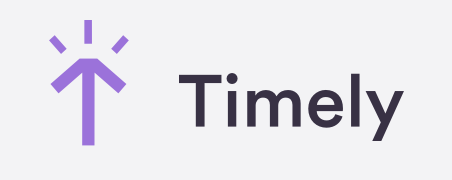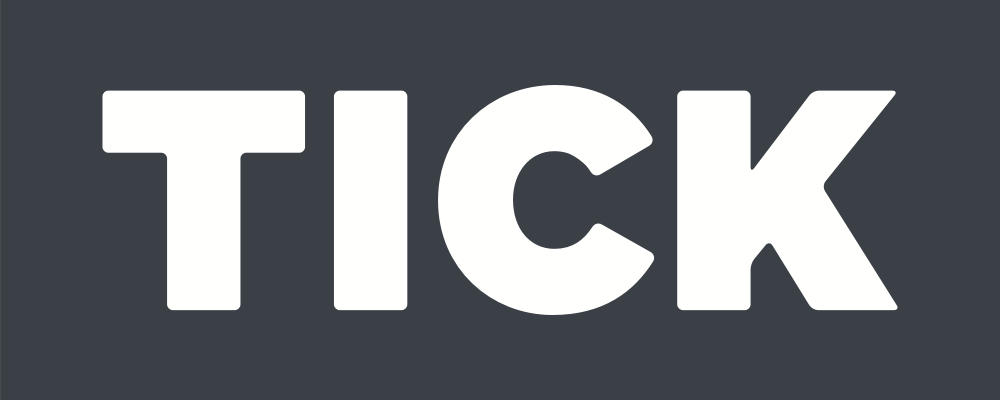The Digital Overload Dilemma: Unpacking the Latest Workplace Productivity Trends
Discover the latest trends in digital workplace productivity. Navigate the balance between technological advancement and digital overload, and uncover strategies to maintain optimal employee well-being and efficiency using remote employee monitoring software.

Read time: 8 minutes
In a world that's more connected than ever, the rapid influx of digital tools is redefining the contours of the modern workplace. A recent report, ActivTrak’s 2023 State of the Workplace, has provided some revealing insights into this evolving dynamic.
The study throws light on the precarious balance of digital tool adoption, employee productivity, and workplace engagement. At Insightful, we've delved deep into the report's findings, uncovering vital insights for businesses navigating the digital age.
Technology's Two Faces: Empowerment & Overload
In the language of the 21st-century workplace, 'technology' is often synonymous with 'progress'.
This digital age, punctuated by rapid technological evolution, has reshaped how we work, offering an onslaught of tools that promise improved efficiency, collaboration, and output. But as the age-old adage warns - too much of a good thing can be bad.
The 2023 State of the Workplace report provides insights that might just validate this warning, indicating that we may be on the cusp of a digital saturation point.
Empowerment Through Specialization
As businesses aim to streamline operations and improve outcomes, there's been a marked rise in the adoption of specialized digital tools. For instance:
- Design teams now have a broader selection of advanced tools, resulting in an 18% increase in their usage.
- IT departments leverage a series of admin tools, marking a 13% rise in their interaction.
- Developers, vital to many of today's businesses, have seen a 9% uptick in tool interaction, denoting the introduction or increased use of coding, testing, or deployment tools.
- System processes, the backbone of many organizational operations, noted a 5% increase in tool usage.
The Overload Syndrome
While these tools certainly offer solutions, their proliferation can be overwhelming. Here's what the digital overload might look like in a day-to-day setting:
- Task Switching: Employees frequently switch between apps and tools, leading to cognitive overload and reduced focus. For example, a designer might jump between a design tool, a communication platform, a task manager, and an email application within mere minutes.
- Notification Deluge: The constant barrage of alerts and notifications from multiple tools can lead to persistent distractions.
- Learning Curve: With the introduction of new tools, employees often need to upskill, leading to potential stress and time taken away from primary tasks.
- Data Disintegration: Data scattered across different platforms can hinder effective decision-making and lead to redundancies.
Proactive Strategies to Combat Overload
Luckily, employers and management can take a proactive approach in order to combat the threat of digital overload:
- Tech Audits: Periodically review the tech stack. Are all tools being used to their full potential? Can any be consolidated or phased out? A tech audit can identify redundancies and streamline operations.
- Unified Platforms: Wherever possible, adopt platforms that integrate multiple functionalities. For instance, instead of having separate tools for task management, communication, and documentation, look for platforms that offer all these features cohesively.
- Training and Onboarding: When introducing a new tool, ensure comprehensive training sessions for employees, and maintain an open channel for feedback and queries.
- Mindful Communication: Encourage employees to use dedicated times for checking emails or messages, thus reducing constant task-switching.
- Feedback Mechanism: Create a feedback loop where employees can voice their concerns about any tool or platform, suggesting alternatives or modifications.
- Wellness Checks: Recognize the signs of burnout or stress among employees. Open dialogues about workload and tool efficiency can help in early identification and intervention.
Technology will march on, but with mindful management and a focus on human-centric design, businesses can harness its power without overwhelming their most vital asset: their employees.
The Employee Engagement Equilibrium
Employee engagement refers to the emotional commitment and involvement an employee has towards their organization and its goals.
When employees are engaged, they care about their work and the success of the company, leading to higher levels of motivation, performance, and productivity. Conversely, disengagement can lead to decreased performance, higher attrition rates, and a negative workplace culture.
Achieving the right balance in employee engagement is not just about enthusiasm and commitment; it's also about ensuring that employees are neither overburdened nor underutilized.
The 2023 State of the Workplace report underscores the importance of this balance, shedding light on current workplace trends and areas of concern.
Overutilization Concerns
The challenge of overutilization touches upon the risk of burning out even the most enthusiastic employees. When individuals are stretched thin over prolonged periods, it can lead to decreased job satisfaction, increased stress, and eventual disengagement.
- 24% of employees are categorized as overutilized, indicating that a significant portion of the workforce might be grappling with excessive workloads.
- 12% of employees have faced such overutilization consistently, enduring this state for the majority of the year.
A trend that's particularly concerning is the extension of work into personal time. While a limited 5% of employees work on weekends, they are now dedicating an additional average of 18 minutes to their tasks.
Some sectors, like computer hardware and media, are especially prone to this trend, with their professionals reporting significantly longer weekend work durations.
Issues of Underutilization
On the flip side of overutilization is the risk of underutilization. Employees who are not sufficiently challenged or engaged in their roles may begin to feel disconnected from their tasks and the larger company mission.
4% of the workforce is underutilized, implying that a segment of employees may lack adequate tasks or challenges.
Strategies for Effective Utilization
Achieving the right engagement balance requires proactive strategies from employers:
- Regular Assessments: Begin by frequently evaluating employee workloads. A consistent check can help in timely identification of both over and underutilization.
- Task Redistribution: If specific teams or members are persistently overburdened, consider reallocating tasks or even expanding the team.
- Training and Development: For those underutilized, offer training opportunities to enhance their skills, allowing them to shoulder more responsibilities or diversify their roles.
- Flexible Work Hours: Acknowledge the dedication of those working extended hours or weekends. Offer compensatory leaves or flexible work schedules as a gesture of appreciation.
- Mental Health Initiatives: Engagement is closely tied to mental well-being. Ensure that employees have access to counseling services, wellness programs, and other resources that support their mental health.
- Cross-functional Collaboration: Encourage teams to work across functions, ensuring role diversity and providing a fresh perspective on tasks.
Monitoring employees’ engagement plays a pivotal role in the success of an organization. While enthusiasm and commitment are vital, the physical and mental well-being of the employees cannot be overlooked. Achieving the equilibrium of engagement ensures not only a productive workforce but also a thriving and positive organizational culture.
Deciphering Productivity Patterns
Productivity is the lifeblood of an organization, dictating both individual and collective outputs. Productivity monitoring can reveal patterns about the efficiency of workflows, the effectiveness of management strategies, and the overall health of an organization.
However, the ways in which employees work, especially the structure of their workdays, seem to have an element of consistency despite the ever-evolving business and technological landscapes.
Consistency Amidst Change
Interestingly, even as businesses adopt new technologies and adapt to changing market demands, certain productivity patterns remain remarkably stable. Here's a closer look at the recent trends:
On average, employees work just over 10 hours a day.
However, the actual screen time, or active engagement with work-related tasks, averages out to 7 hours and 24 minutes. This suggests periods of breaks, meetings, or offline tasks punctuating the day.
The first six months of 2022 marked a subtle but positive shift in productivity, with workers being productive for an additional 4 minutes daily. While this might seem minor, over a span of months, it can accumulate to significant hours.
A quarterly breakdown paints a clearer picture:
The first quarter of the year shines as a period of heightened productivity and focus.
Contrarily, the fourth quarter indicates a dip in productivity levels, and the third quarter sees a waning focus.
When it comes to the days of the week:
- Tuesday emerges as the champion of productivity.
- Friday, on the other hand, trails behind in terms of output.
- Monday sets a promising start with peak focus levels, though this concentration slightly tapers off as the week progresses, reaching its lowest on Friday.
While certain productivity patterns remain steadfast, businesses should not become complacent. Constant vigilance, combined with a willingness to adapt, can lead to a workplace that's both efficient and conducive to employee well-being.
Leveraging Insightful to Counteract Digital Overload
The 21st-century digital workspace is fraught with challenges: an onslaught of digital tools, risk of digital overload, task-switching, and notification deluge, to name a few. Businesses, now more than ever, need strategies to navigate these challenges while ensuring optimal employee engagement and productivity. Insightful emerges as a beacon in this landscape, offering tailored solutions:
Location-Based Productivity Metrics: With the evolving nature of workplaces, from traditional offices to remote setups, Insightful’s Office vs Remote feature gives businesses the capability to analyze productivity trends based on location. This is especially pivotal in the era of digital tool adoption and the potential overutilization of employees.
Holistic PC Monitoring: Leveraging PC monitoring software like Insightful's real-time capabilities ensures businesses have a pulse on the most and least productive digital tools in their ecosystem, thus combatting the challenge of digital overload and frequent task switching.
Tailored Employee Monitoring: With the rising trend of remote work, employee monitor software needs to be adaptable. Insightful’s Activity Tracking and Always Active features cater to this, offering a nuanced view of employee engagement levels, from both overutilized and underutilized perspectives.
Data Security Across Platforms: In an era where data disintegration poses challenges, Insightful ensures data remains secure across varied work locations, alerting managers to potential threats and anomalies.
Integrated Data Management: Addressing the issues of scattered data, Insightful seamlessly integrates with tools like Jira and Basecamp, facilitating centralized data access, reducing redundancies, and ensuring efficient decision-making.
Custom Alerts for Deviations: To counter the risks posed by an overabundance of notifications, Insightful's customizable alert system ensures managers receive only the most crucial updates, ensuring optimal employee well-being and productivity levels.
Efficient Time Tracking: With the blending of work and personal time, a reliable app to keep track of work hours is essential. Insightful’s software stands out, addressing both the challenges of overextended work hours and ensuring accurate productivity tracking across various digital setups.
By aligning with the challenges of the modern digital workspace, Insightful provides businesses with a comprehensive solution. Harnessing the power of productivity tracking software ensures businesses can navigate the digital age without overload, fostering both employee well-being and consistent organizational efficiency.
Updated on May 9th, 2024
¿Está listo para tomar el control total de su lugar de trabajo?
Pruebe la solución más sencilla hoy mismo...
Prueba Gratis.svg)
.jpg)




























%20(2)%20(1)%20(2).png)

%20(1).png)
%20(1).png)




%20(1)%20(1).png)